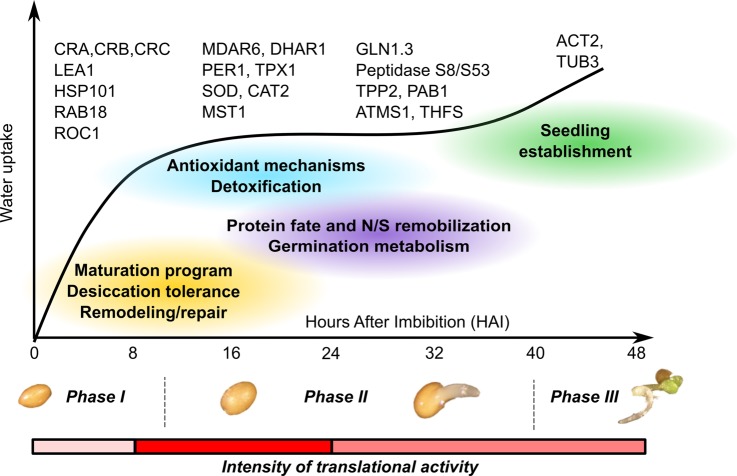Fig. 5.
Metabolic transitions evidenced from Arabidopsis de novo synthesized proteins during the three canonical phases of seed germination. During Phase I, the hydrated seed translates stored mRNAs and restarts the late seed developmental program as exemplified by the synthesis of seed storage proteins (e.g. cruciferin (CRA)) and late embryogenesis abundant proteins (e.g. LEA1). The transition from Phase I to Phase II is characterized by the action of important remodeling/repair (e.g. rotamase cyclophilin (ROC1)), antioxidant (e.g. monodehydroascorbate reductase (MDAR6)), and detoxification mechanisms (e.g. mercaptopyruvate sulfurtransferase 1 (MST1)). During Phase II, seed storage and other proteins are degraded by the combined action of the proteasome (20S proteasome subunit PAB1) and peptidases (peptidase S8/S53, tripeptidyl peptidase II (TPPII)) that fuel amino-acid-incorporating metabolism (glutamine synthetase 1.3 (GLN1.3)). Immediately preceding Phase III, seedling establishment is prepared thanks to the mRNA translation cytoskeleton components (Actin2 (ACT2), Tubulin 3 (TUB3)). The vertical dashed lines distinguish the three phases of Arabidopsis seed germination based on water uptake kinetics. The red bar represents the mRNA translational activity based on radiolabeled Met incorporation (Table I).

